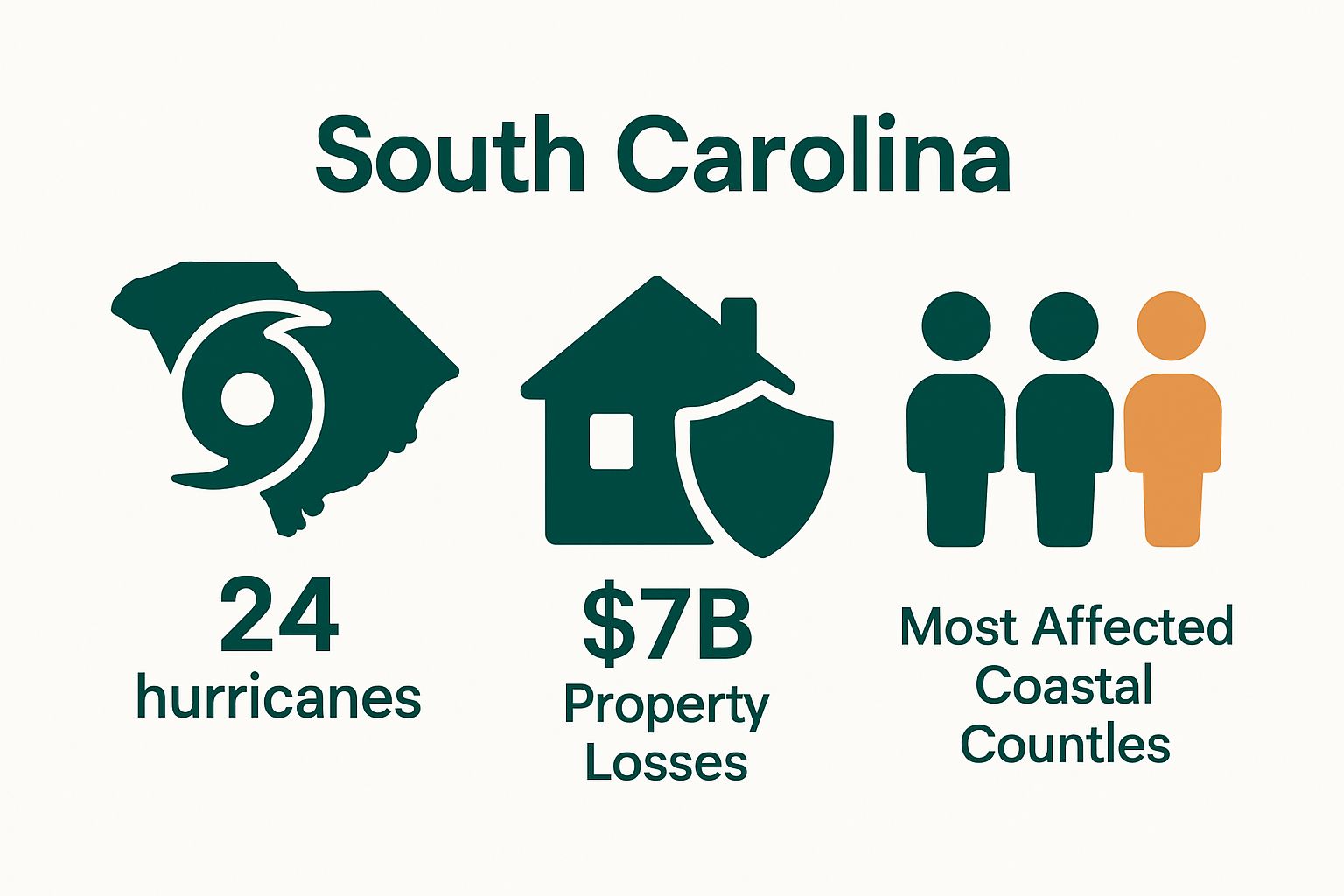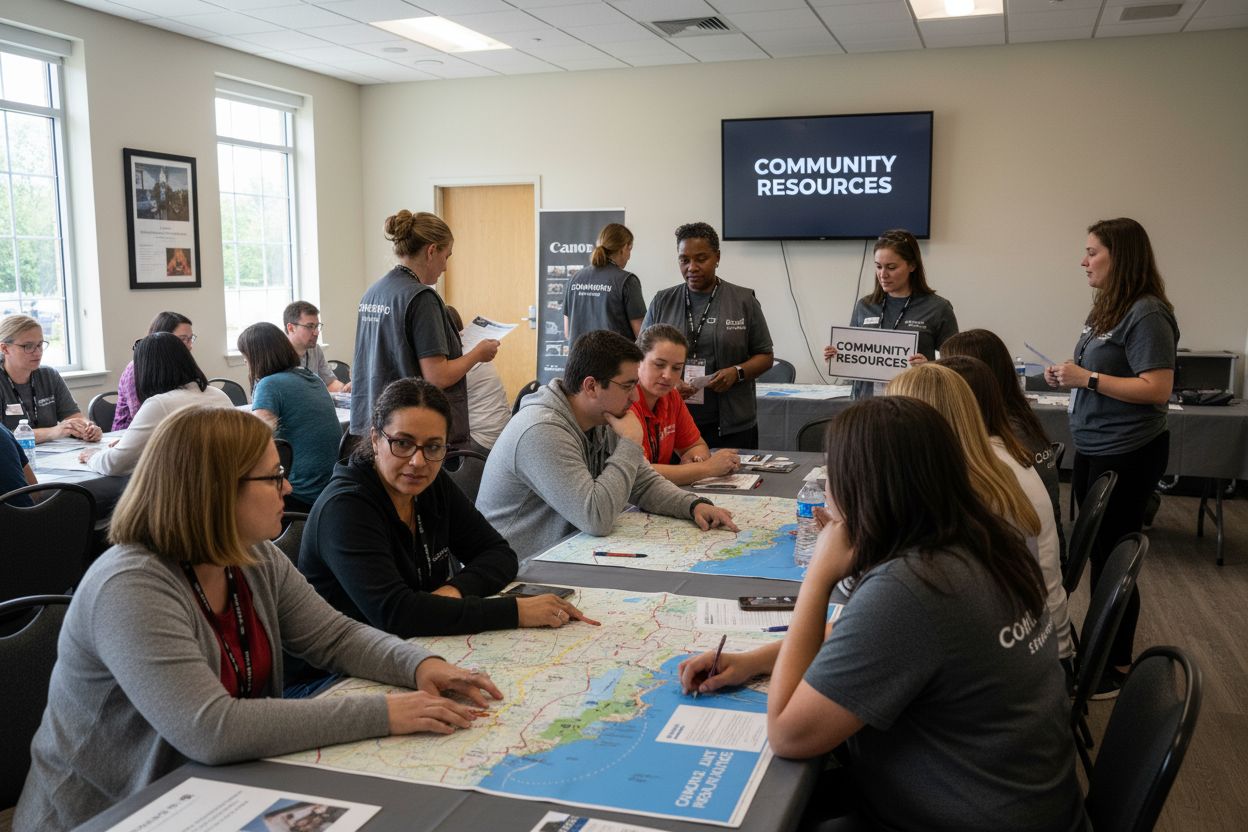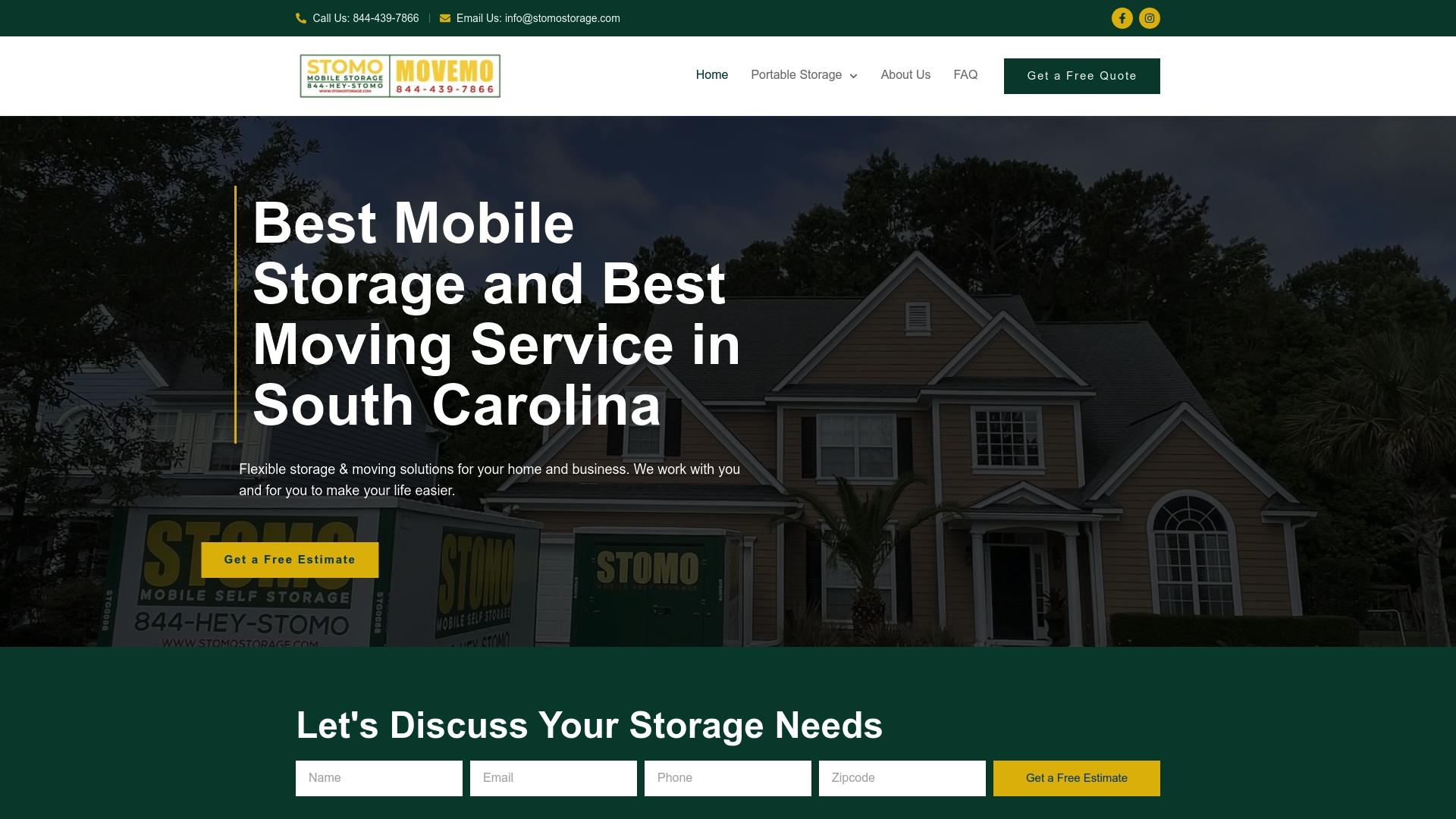Hurricane season in South Carolina is not something you can ignore, especially when over 100 hurricanes have hit the state between 1851 and 2020. Most people picture grocery store runs for bottled water and batteries as their main defense. That barely scratches the surface. True hurricane preparedness means having a plan that could make the difference between major loss and real security when the next storm arrives.
Table of Contents
Quick Summary
| Takeaway | Explanation |
| Hurricane preparedness is essential in South Carolina | Due to its location, residents face significant hurricane risks and must proactively prepare. |
| Create a comprehensive emergency communication plan | Establish clear communication protocols and maintain an updated emergency contact list for your family. |
| Assemble an emergency supply kit | Prepare essential supplies to sustain your family for at least 72 hours during a disaster. |
| Understand local evacuation routes and shelters | Knowing where to go during an evacuation can significantly enhance safety and response efficiency. |
| Document all storm-related damages promptly | Accurate documentation is crucial for expediting insurance claims and ensuring fair compensation after a hurricane. |
What is Hurricane Preparedness and Why It Matters
Hurricane preparedness represents a critical strategic approach that South Carolina residents must understand to protect their lives, property, and community during potentially catastrophic tropical weather events. Hurricane readiness goes far beyond simply stocking up on water and batteries it involves comprehensive planning, risk assessment, and proactive safety measures.
Understanding Hurricane Risk in South Carolina
South Carolina sits directly in the Atlantic hurricane corridor, making our state particularly vulnerable to these powerful storm systems. The geographical location means residents face significant hurricane risks annually from June through November. Preparedness is not optional but essential. Between 1851 and 2020, over 100 hurricanes have impacted South Carolina, causing billions in damage and potentially hundreds of fatalities.
Components of Effective Hurricane Preparedness
Effective hurricane preparedness encompasses multiple critical elements that work together to minimize risk and maximize safety:
-
Developing a comprehensive family emergency communication plan
-
Creating an emergency supply kit with essential survival resources
-
Understanding local evacuation routes and potential sheltering locations
-
Protecting critical personal documents and valuables
-
Securing property and potential projectile items before storm arrival
These strategic preparations can dramatically reduce potential losses and increase survival chances during extreme weather events.
This table outlines the essential components of a hurricane preparedness plan in South Carolina, showing the role each element plays in effective storm readiness.
| Preparedness Component | Purpose/Benefit |
| Family Communication Plan | Ensures all family members can reconnect and share emergency info if separated. |
| Emergency Supply Kit | Provides vital resources (food, water, medical) for at least 72 hours post-storm. |
| Knowledge of Evacuation Routes | Enables swift, safe evacuation during official orders or rising threats. |
| Protection of Documents/Valuables | Safeguards important records, IDs, insurance for recovery and claims. |
| Securing Property | Reduces potential for damage from wind/projectiles and increases household safety. |
Ultimately, hurricane preparedness is about empowerment. By understanding risks, planning thoroughly, and maintaining flexible response strategies, South Carolina families can transform potential vulnerability into resilient, proactive safety.
The Unique Risks of Hurricanes in South Carolina
South Carolina’s coastal geography creates a complex and dangerous hurricane landscape that distinguishes our state from other regions. Research from the South Carolina Emergency Management Division reveals our state’s extraordinary vulnerability to tropical cyclones, driven by unique geographical and meteorological conditions.
Geographic Vulnerability Factors
Our state’s extensive coastline stretches approximately 187 miles, creating immense exposure to Atlantic hurricane systems. The combination of low-lying coastal regions, dense population centers, and proximity to warm ocean currents amplifies hurricane risks dramatically. Charleston, Myrtle Beach, and Beaufort counties represent particularly high-risk zones where storm surge and flooding can cause catastrophic damage.
Below is a table that summarizes the distinct hurricane hazards specific to South Carolina, helping readers quickly see how the state’s risks differ from more general hurricane threats.
| Hazard | Description |
| Extreme Storm Surge | Water levels can exceed 10-15 feet in some coastal areas, causing widespread flooding. |
| Rapid Inland Flooding | Flat terrain and extensive river systems lead to fast, extensive flooding away from the coast. |
| Limited Evacuation Routes | High-density areas with few exit routes complicate timely evacuations. |
| Sustained High Winds | Winds often exceed 100 mph, increasing risk of structural damage and power outages. |
| Economic Disruption | Major impacts to agriculture and tourism due to storm damage and interruptions. |

Specific Hurricane Hazards in South Carolina
Multiple interconnected risks make South Carolina hurricanes especially dangerous:
-
Extreme storm surge potential exceeding 10-15 feet in some coastal areas
-
Rapid inland flooding due to flat terrain and extensive river systems
-
High-density population zones with limited evacuation routes
-
Potential for sustained winds over 100 miles per hour
-
Significant economic disruption across agriculture and tourism sectors
These risks are not theoretical. Historical data demonstrates the profound impact hurricanes can have on our state.
Learn about our hurricane evacuation strategies to understand how communities can mitigate these significant threats.
Understanding these unique risks transforms hurricane preparedness from an abstract concept to a critical survival strategy. South Carolina residents must recognize that our geographical position demands proactive, comprehensive emergency planning that goes far beyond standard emergency recommendations.
Essential Elements of a Hurricane Preparedness Plan
Hurricane preparedness requires a comprehensive approach that goes beyond basic emergency supplies. A strategic plan involves multiple interconnected components designed to protect lives, property, and ensure community resilience during extreme weather events.
Communication and Documentation Strategy
Effective hurricane preparedness begins with robust communication planning. Families must establish clear communication protocols that account for potential communication infrastructure breakdown. This involves creating a family emergency contact list, identifying out-of-state emergency contacts, and ensuring all family members understand how to reconnect if separated. Critical documents like identification, insurance papers, medical records, and property documents should be digitally backed up and stored in waterproof, portable containers.
Emergency Supply and Resource Management
A comprehensive hurricane preparedness plan demands careful resource management. Essential supplies must sustain families for a minimum of 72 hours, accounting for potential utility disruptions and limited access to external resources:
-
Sufficient drinking water (one gallon per person per day)
-
Non-perishable food supplies
-
First aid kit and critical medications
-
Battery-powered or hand-crank radio
-
Flashlights and extra batteries
-
Personal hygiene and sanitation items
Explore our hurricane recovery resources to understand how to prepare for potential post-storm challenges. Proper planning transforms potential vulnerability into strategic resilience, enabling South Carolina families to navigate hurricane risks with confidence and preparedness.
How Community Resources Support Hurricane Preparedness
Community resources play a critical role in creating a robust hurricane preparedness ecosystem that extends far beyond individual household planning. These interconnected support systems provide essential infrastructure, communication networks, and emergency response capabilities that significantly enhance collective resilience during tropical storm events.
Emergency Alert and Communication Systems
South Carolina maintains sophisticated emergency communication platforms designed to disseminate critical information rapidly across multiple channels. Local and state emergency management agencies utilize advanced technologies to provide real-time updates, evacuation instructions, and safety guidance. These systems include emergency broadcast networks, mobile alert platforms, local news channels, and digital communication channels that ensure residents receive timely and accurate information during potential hurricane threats.
Local Government and Community Support Mechanisms
Local governments and community organizations provide comprehensive support structures that are fundamental to hurricane preparedness:
-
Establishing designated emergency shelters
-
Coordinating transportation for vulnerable populations
-
Providing medical and psychological support services
-
Developing and maintaining emergency supply distribution centers
-
Creating multilingual communication resources
-
Implementing specialized evacuation protocols for different community segments
These support mechanisms demonstrate how collaborative efforts transform individual preparedness into community-wide resilience.
 By creating integrated support systems, South Carolina communities can effectively mitigate hurricane risks and protect their most vulnerable residents.
By creating integrated support systems, South Carolina communities can effectively mitigate hurricane risks and protect their most vulnerable residents.
Navigating Recovery and Insurance After a Hurricane
Hurricane recovery in South Carolina requires strategic, methodical approaches to minimize financial and emotional stress. Understanding the complex landscape of post-hurricane recovery involves comprehensive knowledge of insurance processes, documentation requirements, and available government assistance programs.
Insurance Claim Navigation
Successful hurricane insurance claims depend on immediate and thorough documentation. Homeowners must meticulously photograph and record all storm-related damages, preserving evidence that substantiates their insurance claims. This documentation serves as critical proof for insurance adjusters, potentially accelerating the claims process and ensuring fair compensation. Property owners should contact their insurance providers promptly, understanding their specific policy coverage and potential limitations related to hurricane damage.
Government and Community Recovery Resources
Multiple support mechanisms exist to assist South Carolina residents in hurricane recovery:
-
Federal Emergency Management Agency (FEMA) disaster assistance grants
-
State-level emergency relief programs
-
Low-interest disaster recovery loans
-
Temporary housing assistance
-
Counseling and mental health support services
-
Community rebuilding initiatives
Learn more about our hurricane recovery storage solutions that can help streamline your post-hurricane restoration process. Understanding these resources transforms a potentially overwhelming situation into a structured, manageable recovery journey, enabling South Carolina residents to rebuild and recover with confidence and strategic support.
Prepare With Confidence: Local Storage Solutions for South Carolina Hurricane Season
When a hurricane is approaching South Carolina, worry and uncertainty can set in fast. This article explains that everyone needs a hurricane preparedness plan, but securing your property and valuable belongings can still feel overwhelming. If you are concerned about how to protect your household during storms or need a flexible solution for safeguarding important items, you are not alone. Many South Carolina families face the same challenges, especially with our region’s unpredictable weather and history of severe storms. The good news is you do not have to handle it on your own. Discover how our South Carolina mobile storage options deliver weather-resistant containers and concierge moving support right where you need it most. With local service hubs, responsive family-owned care, and flat-rate transparent pricing, we help you create peace of mind while you focus on your family’s safety.

Are you ready to act before hurricane season hits? Visit https://stomostorage.com to explore secure portable storage, speedy storm damage support, and moving services trusted by your fellow South Carolinians. Learn more about how we serve residents across the state and get personalized solutions today. If you are planning for renovations or storm recovery, also see our Renovation Storage Resources and experience award-winning disaster preparation support.
Frequently Asked Questions
How can I develop a comprehensive family emergency communication plan for hurricanes?
To develop a family emergency communication plan, start by creating a contact list that includes out-of-state family members and friends. Ensure all family members know how to reach each other and identify a common meeting place if you become separated during a hurricane.
What should I include in my hurricane emergency supply kit?
Your hurricane emergency supply kit should include essentials such as one gallon of water per person per day for at least three days, non-perishable food, first aid supplies, and a battery-powered or hand-crank radio. Assemble these items in an easy-to-access location, and check supplies every six months to ensure everything is fresh and functional.
What local evacuation routes should I be aware of during a hurricane?
Familiarize yourself with your local evacuation routes by consulting community maps or official local government resources. Plan to practice the route with your family so everyone knows how to evacuate quickly and safely when a hurricane threatens.
How can I protect my property before a hurricane arrives?
To protect your property, secure or bring inside any loose items that could become projectiles in strong winds and ensure that windows and doors are fortified. Take action at least 24 hours before the storm to minimize potential damage and increase safety.
What documents should I safeguard in case of a hurricane?
You should securely store critical documents such as identification, insurance policies, and medical records in waterproof containers. Consider digital backups for important files and keep these backups readily accessible during hurricane season.
How can my community support hurricane preparedness efforts?
Your community can enhance hurricane preparedness by participating in local emergency plans and attending training or drills organized by local officials. Engage with community organizations that focus on disaster preparedness to strengthen collective resilience in the face of potential storms.
